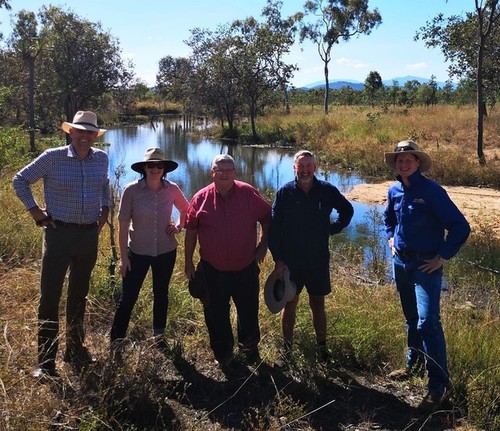Mulloon Institute Project Worona Station Queensland
17 June 2019
The Mulloon Institute seeks to actively demonstrate regenerative practices of water, soil and vegetation management that create sustainable, resilient environments. Their goals are a target of 100 landscape rehydration projects in the next 10 years. Amongst those projects is Worona Station in North Queensland close to Charters Towers. A decision to improve the drought resilience and productivity of their property four years ago saw the Le Feurve family undertake a series of landscape rehydration initiatives to retain moisture on their 6677 hectare property. They are now reaping the rewards and have partnered with NQ Dry Tropics to undertake further works, designed by the Mulloon Institute, to achieve their long term plans for rehydration and regeneration across the whole of the property. Healthy creeks store water in the adjoining landscape, providing critical soil moisture for flora and fauna to thrive, building resilience for extreme weather conditions. The aim is to restore the creeks and floodplains to as close as possible to their original state and function. The project focuses on creek repair and erosion control using small interventions to slow and filter water flow, prevent further erosion and begin rebuilding the soil. Initial priorities are the floodplains, then the undulating slopes, then the higher country. Dry gully (not a creek), in the background, plugged with resultant ponding water. Interaction of that same water with the landscape underscores the importance of re-vegetation through rehydrated soil. Repeated across Worona water is captured, sediment managed and erosion checked with all year feed for managed cattle grazing. Inspecting the project from left to right Nico Padavan, COO NQLIRA, Elyse Herrald-Woods NQLIRA, Chairman of the North Queensland Livestock Industry Reconstruction Agency Shane Stone, pastoralist Chris Le Feuvre, Worona Station and Sam Skeat, Grazing Project Officer, NQ Dry Tropics supporting and collaborating with Worona Station. What was once a dry unproductive gully prone to erosion and sediment runoff in the background transformed.
- Document type: Photo
- Time periods: Australian Public Service, NQLIRA
- People: Elyse HERRALD-WOODS, Chris LeFEURVE, Nico PADAVAN, Sam SKEAT
Download JPEG / 453 KB
